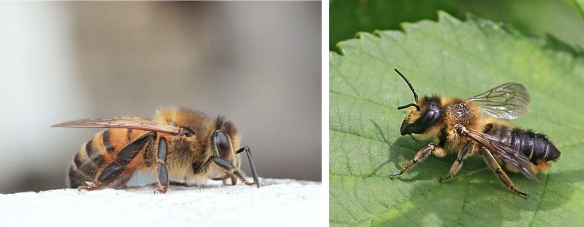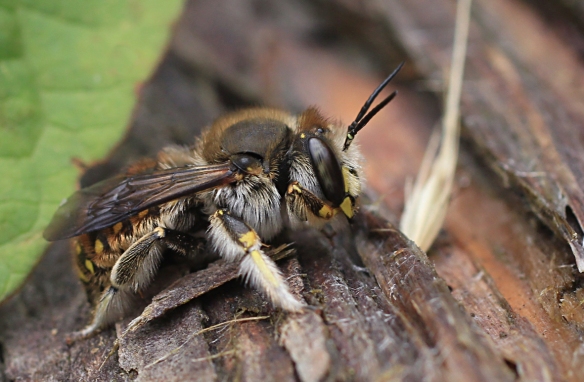
Harry the honeybee and Meghan the leaf-cutter bee
Oh dear, trouble is brewing in the Royal Hive.
It had all started so well. Harry the honeybee drone was born in the hive, living a life of luxury being fed larval jelly by the worker bees, his accident of birth requiring him to do nothing except produce an heir to the Queen, then die. Living in an echo chamber of etiquette was restrictive, spent obeying the hierarchy, with an occasional glimpse of the outside world whenever the hive was wrenched open and the honey collected. Admittedly he did spend some time defending the hive, but the lack of a sting meant his role was reduced to buzzing loudly from behind the frontline. Harry was lonely, feeling he could have a more fulfilling role in the outside world.
Then one day he met Meghan, a beautiful leaf-cutter bee. She led a life of independence, having carved out a career as an actress in a television series. She captivated Harry with stories of being able to buzz when she liked, of choosing to live in any hole she wanted, and of making her own honey. Meghan was strong and she had a global vision – the empowerment of solitary bees.
It was love at first sight and the insects in the park were excited that Harry had finally found happiness. They had memories of his mother being cast out from the hive, hounded by paparazzi flies and then swatted to death. But it hasn’t been easy for Harry and Meghan – they are constantly peered at and surveyed, photographed for reference and their movements tracked on national biodiversity recording websites. And it was hard for a solitary bee to adjust to living in a hive.
So they have decided to step back from senior hive duties and fly out on their own, issuing a self-indulgent statement on Insectgram and disappointing the Queen bee. They want to be financially independent of the honey-making machine, build a nest on the other side of the world, make sponsorship deals for their own brand of Royal Jelly and live a celebeety lifestyle as ‘influencers’.
A lot of the insects aren’t happy. The bees’ privilege of being voted the most important beings on earth has irked many who go about their vital work unrecognised. They are angry the Queen was disrespected, demanding the couple is stripped of their common names, and calling for a refund for the luxury boutique bee hotel the insects paid for so the pair could have some privacy. The more conservative-minded insects are calling it a constitutional crisis and are worried that the colony will collapse if they left. Whereas the republican insects, always moaning about much honey the Royal Hive makes, along with reports of the thousands of bees working for minimum wage, are rubbing their legs together at the thought of more pollen for the masses.
There are more important things to worry about…








